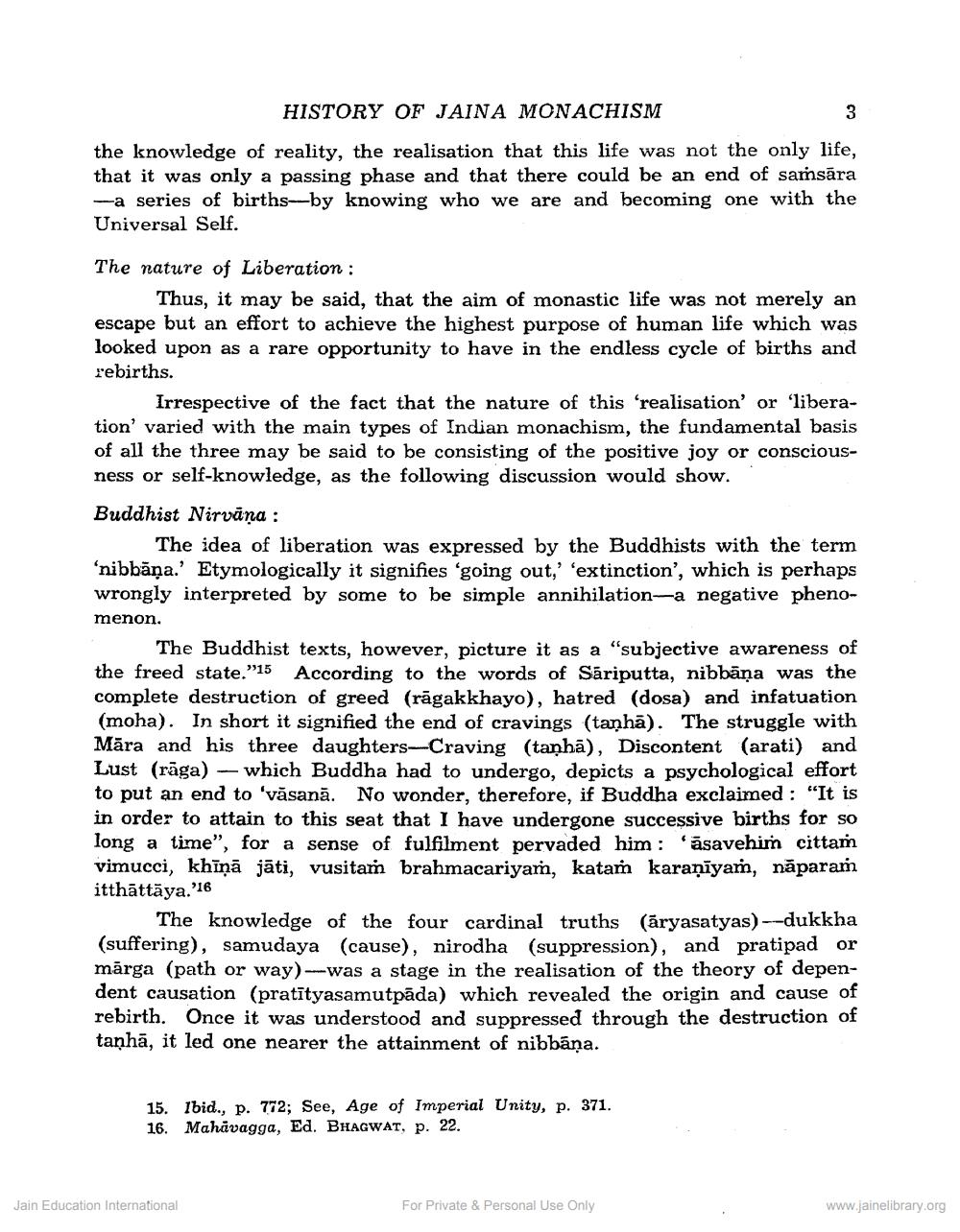Book Title: History of Jaina Monachism Author(s): S B Deo Publisher: Deccan College Research Institute View full book textPage 8
________________ HISTORY OF JAINA MONACHISM the knowledge of reality, the realisation that this life was not the only life, that it was only a passing phase and that there could be an end of samsāra --a series of births--by knowing who we are and becoming one with the Universal Self. The nature of Liberation : Thus, it may be said, that the aim of monastic life was not merely an escape but an effort to achieve the highest purpose of human life which was looked upon as a rare opportunity to have in the endless cycle of births and rebirths. Irrespective of the fact that the nature of this 'realisation' or 'liberation' varied with the main types of Indian monachism, the fundamental basis of all the three may be said to be consisting of the positive joy or consciousness or self-knowledge, as the following discussion would show. Buddhist Nirvāna : The idea of liberation was expressed by the Buddhists with the term 'nibbāņa.' Etymologically it signifies 'going out,' 'extinction', which is perhaps wrongly interpreted by some to be simple annihilation-a negative phenomenon. The Buddhist texts, however, picture it as a "subjective awareness of the freed state.” 15 According to the words of Sāriputta, nibbāna was the complete destruction of greed (rāgakkhayo), hatred (dosa) and infatuation (moha). In short it signified the end of cravings (taṇhā). The struggle with Māra and his three daughters-Craving (taṇhā), Discontent (arati) and Lust (rāga) - which Buddha had to undergo, depicts a psychological effort to put an end to 'vāsanā. No wonder, therefore, if Buddha exclaimed: “It is in order to attain to this seat that I have undergone successive births for so long a time", for a sense of fulfilment pervaded him : 'āsavehir cittam vimucci, khīņā jāti, vusitar brahmacariyam, katam karaṇīyam, nāparam itthāttāya.'16 The knowledge of the four cardinal truths (āryasatyas) --dukkha (suffering), samudaya (cause), nirodha (suppression), and pratipad or mārga (path or way) --was a stage in the realisation of the theory of dependent causation (pratītyasamutpāda) which revealed the origin and cause of rebirth. Once it was understood and suppressed through the destruction of tanhā, it led one nearer the attainment of nibbāna. 15. Ibid., p. 772; See, Age of Imperial Unity, p. 371. 16. Mahavagga, Ed. BHAGWAT, p. 22. Jain Education International For Private & Personal Use Only www.jainelibrary.orgPage Navigation
1 ... 6 7 8 9 10 11 12 13 14 15 16 17 18 19 20 21 22 23 24 25 26 27 28 29 30 31 32 33 34 35 36 37 38 39 40 41 42 43 44 45 46 47 48 49 50 51 52 53 54 55 56 57 58 59 60 61 62 63 64 65 66 67 68 69 70 71 72 73 74 75 76 77 78 79 80 81 82 ... 616
